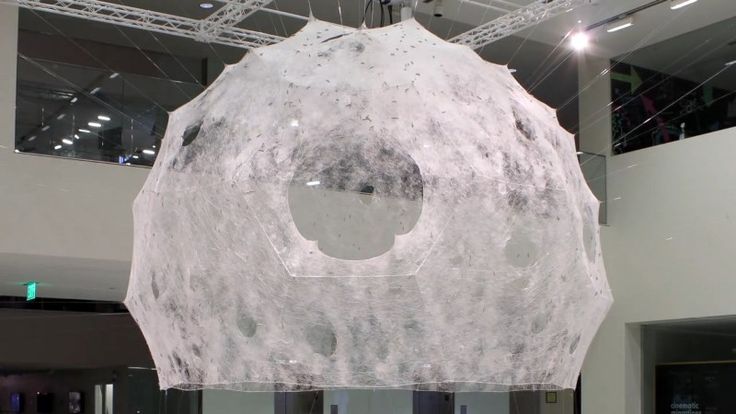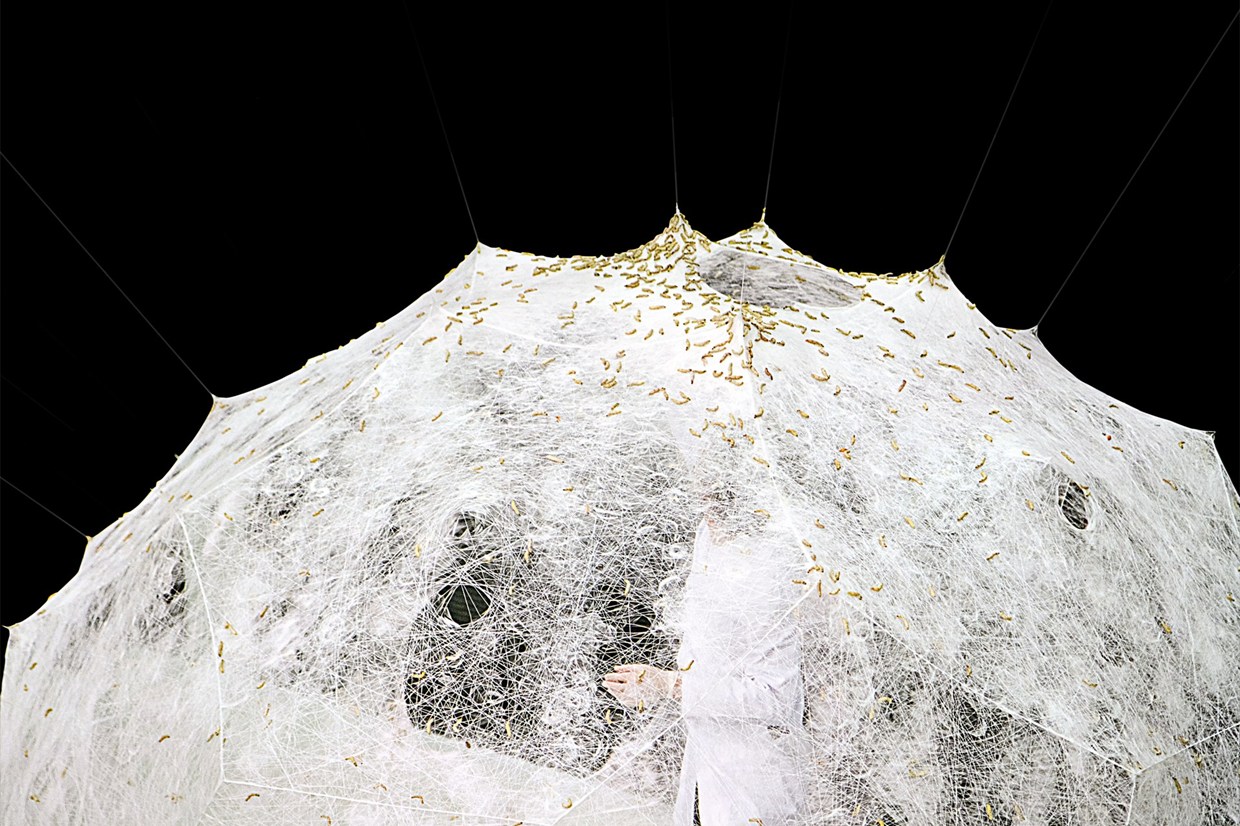We humans are changing. We have become so intertwined with what we have created that we are no longer separate from it. We have outgrown the distinction between the natural and the artificial. We are what we make. We are our thoughts, whether they are created by our neurons, by our electronically augmented minds, by our technologically mediated social interactions, or by our machines themselves. We are our bodies, whether they are born in womb or test tube, our genes inherited or designed, organs augmented, repaired, transplanted, or manufactured.
We can no longer see ourselves as separate from the natural world or our technology, but as a part of them, integrated, codependent, and entangled.
Our prosthetic enhancements are as simple as contact lenses and tattoos and as complex as robotic limbs and search engines. They are both functional and aesthetic. We are our perceptions, whether they are through our eyes and ears or our sensory-fused hyper-spectral sensors, processed as much by computers as by our own cortex. We are our institutions, cooperating super-organisms, entangled amalgams of people and machines with super-human intelligence, processing, sensing, deciding, acting. Our home planet is inhabited by both engineered organisms and evolved machines. Our very atmosphere is the emergent creation of forests, farms and factories. Empowered by the tools of the Enlightenment, connected by networked flows of freight and fuel and finance, by information and ideas, we are becoming something new. We are at the dawn of the Age of Entanglement.
In the last age, the Age of Enlightenment, we learned that nature followed laws. By understanding these laws, we could predict and manipulate. We invented science. We learned to break the code of nature and thus empowered, we began to shape the world in the pursuit of our own happiness. We granted ourselves god-like powers: to fly, to communicate across vast distances, to hold frozen moments of sight and sound, to transmute elements, to create new plants and animals. We created new worlds entirely from our imagination. Even Time we harnessed. The same laws that allowed us to explain the motions of the planets, enabled us to build the pendulum of a mechanical clock. Thus time itself, once generated by the rhythms of our bodies and the rhythms of the heavens, was redefined by the rhythms of our own machines. With our newfound knowledge of natural laws we orchestrated fantastic chains of causes and effect in our political, legal, and economic systems as well as in our machines. Our philosophies neatly separated man and nature, mind and matter, cause and effect. We learned to control.
By understanding the laws of nature, we could predict and manipulate. We invented science.
Eventually, in the ultimate expression of our Enlightenment exuberance, we constructed digital computers, the very embodiments of cause and effect. Computers are the cathedrals of the Enlightenment, the ultimate expression of logical deterministic control. Through them, we learned to manipulate knowledge, the currency of the Enlightenment, beyond the capacity of our own minds. We constructed new realities. We built complex algorithms with unpredictable behavior. Thus, within this monument to Enlightenment thinking, we sowed the seeds of its demise.We began to build systems with emergent behaviors that were beyond our own understanding, creating the first crack in the foundation.
The second threat to the foundation of the Enlightenment was in the institutions we created. Our communication technology allowed us to build enterprises of unimaginable scope and capability. A modern corporation or NGO has tens of thousands of people, most of whom have never met one another, who are capable of coordinated action, making decisions that shape the world. Governments are even larger. These enterprises have become more powerful than the individual humans that created them, and in many senses, they have goals of their own. They tend to act in ways that increase their control of resources and enhance their own survival. They are able to perceive and process far more information than a single human, manipulate more matter and energy, act in more ways and places, command more power, and focus more attention. The individual is no longer the most influential player on the world stage. As our technological and institutional creations have become more complex, our relationship to them has changed. We now relate to them as we once related to nature. Instead of being masters of our creations, we have learned to bargain with them, cajoling and guiding them in the general direction of our goals. We have built our own jungle, and it has a life of its own.
The final blow to the Enlightenment will come when we build into our machines the power to learn, adapt, create, evolve.
The final blow to the Enlightenment will come when we build into our machines the power to learn, adapt, create and evolve. In doing so, we will give them the power to surpass us, to shape the world and themselves in ways that we never could have imagined. We have already given our institutions the ability to act on our behalf, and we are destined to have the same uneasy balance of power with our machines. We will make the same attempts to build in checks and balances, to keep their goals aligned with ours. We will face similar challenges. In doing so we need to move far away from the understandable logic of Enlightenment thinking, into something more complicated. We will worry less about the unpredictable forces of nature than about the unpredictable behaviors of our own constructions.
So what is this brave new world that we are creating, governed neither by the mysteries of nature or the logic of science, but by the magic of their entanglement? It is governed by the mathematics of strange attractors. Its geometry is fractal. Its music is improvisational and generative rather than composed: Eno instead of Mozart. Its art is about process more than artifact. It's root's are in Grey Walter's cybernetic tortoises, Marvin Minsky's randomly wired SNARC learning machine, and Nicholas Negroponte's Seek, in which the architecture of a living space emerged from the interaction of a observant robot with a horde of gerbils. The aesthetic of the Entanglement is the beauty that emerges from processes that are neither entirely natural nor artificial, but blend the best of both: the webs of Neri Oxman's silk worms, spun over a robot-wired mesh; the physical telepresence of Hiroshi Ishii's tactile displays or his living bioLogic fabric. We can no longer see ourselves as separate from the natural world or our technology, but as a part of them, integrated, codependent, and entangled.

Unlike the Enlightenment, where progress was analytic and came from taking things apart, progress in the Age of Entanglement is synthetic and comes from putting things together. Instead of classifying organisms, we construct them. Instead of discovering new worlds, we create them. And our process of creation is very different. Think of the canonical image of collaboration during the Enlightenment: fifty-five white men in powdered wigs sitting in a Philadelphia room, writing the rules of the American Constitution. Contrast that with an image of the global collaboration that constructed the Wikipedia, an interconnected document that is too large and too rapidly changing for any single contributor to even read.
A beautiful example of an Entanglement process is the use of simulated biologically-inspired algorithms to design artificial objects through evolution and morphogenesis. Multiple designs are mutated, bred and selected over many generations in a process analogous to Darwinian selection. The artifacts created by such processes look very different from those produced by engineering. An evolved motorcycle chassis will look more like a pelvic bone than a bicycle frame. A computer program produced by a process of evolutionary design may be as difficult to understand as a neural circuit in the brain. Thus, the artifacts that are designed by these biologically-inspired processes take on both the beneficial and the problematic characteristics of biological organisms. Their beauty is in their functional adaption.
We will give machines the power to surpass us, to shape the world and themselves in ways that we never could have imagined.
This is the elegance of the Entanglement: a new expression of beauty emerging from process. In an Entangled design process, the humans will often have input without control; for example, they may influence aesthetic choices by participating in the selection process or by tuning parameters. Such processes lend themselves to collaboration among multiple machines and multiple humans because the interfaces between the parts are fluid and adaptive. The final product is very much a collaborative effort of humans and machines, often with a superior result. It may exhibit behaviors that are surprising to the humans. Some of these behaviors may be adaptive. For example, early walking machines evolved on the Connection Machine took advantage of an obscure round-off error in the floating-point unit that the human programmers did not even know existed. In this sense, artifacts created by the entangled processes may have some of the robustness of a biological organism, as well as some of the surprise and delight.
Besides displaying the organic beauty of organisms, such designs may also exhibit their complex inscrutability, since it may not be obvious how the features in the artifact correspond to the functional requirements. For example, it may be difficult to tell the purpose of a particular line of code in an evolved program. In fact, the very concept of it having a specific purpose is probably ill-formed. The notion of functional decomposition comes from the engineering process of arranging components to embody causes and effects, so functional intention is an artifact of the engineering process. Simulated biological processes do not understand the system in the same sense that a human designer does. Instead, they discover what works without understanding, which has both strengths and weaknesses. Entanglement artifacts are simultaneously artificial and natural; they are both made and born. In the Age of Entanglement, the distinction has little significance.
Entanglement artifacts are simultaneously artificial and natural; they are both made and born.
So what are we to think about this new relationship to our technology? Should we fear it or embrace it? The answer is both. Like any new powerful force in the world, like Science, it will be used for both good and evil. And even when it is intended to be used for good, we will make mistakes. Humanity has been dealing with this conundrum ever since the first cooking fire got out of control and burned down the forest. Recognizing this does not absolve us from our responsibility, it reminds us why it is important. We are remaking ourselves, and we need to choose wisely what we are to become.
This article was originally published in the inaugural issue of Journal of Design and Science on February 22nd, 2016.

Share your thoughts and join the technology debate!
Be the first to comment